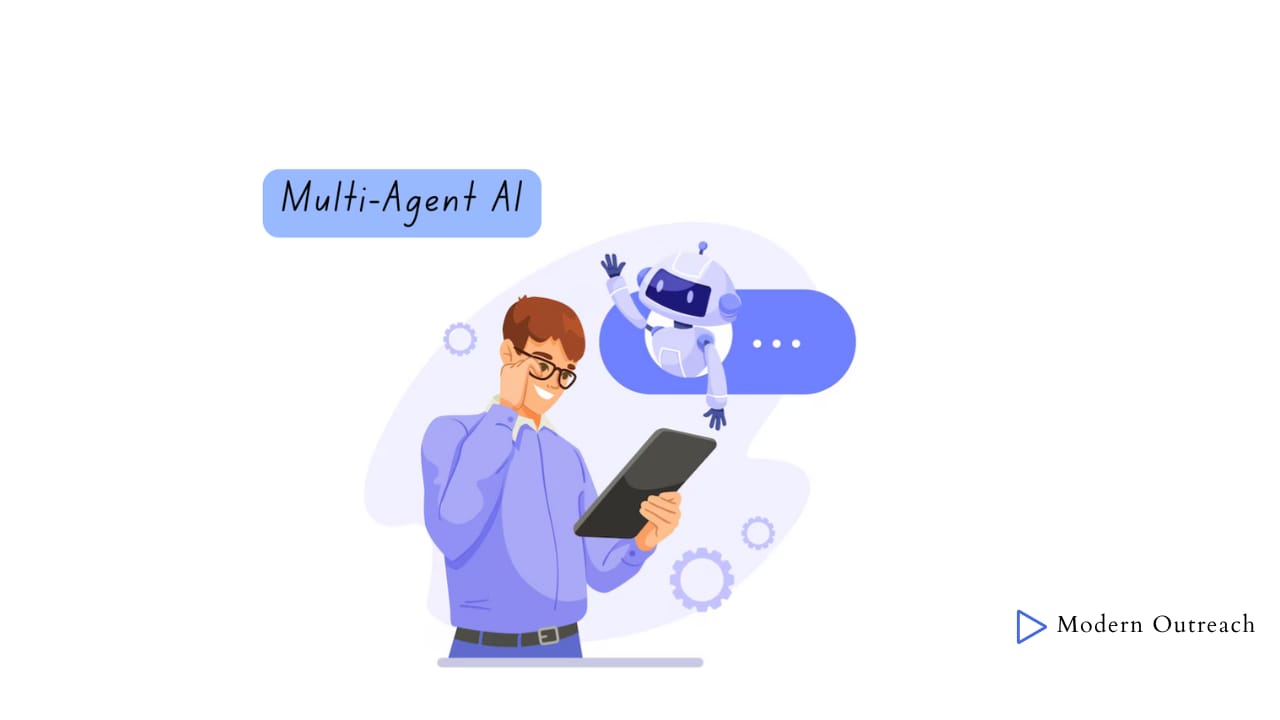Ever wish you had a few extra versions of yourself to tackle everything on your to-do list?
One version firing off emails, another deep in research mode, and a third finally finishing that report you’ve been putting off?
Okay, cloning might be a stretch.
But there is a more practical solution—multi-agent AI tools.
Multi-agent AI can’t clone your brain, but it can simulate the team you wish you had. Each agent takes on a task, works with the others, and gets the job done.
That too with zero burnout and 24/7 uptime!
I’ve been testing out a bunch of these tools lately, and I must say, they’re the future. When you’re tired of multitasking or want to speed up work, these are absolutely worth a try.
In this article, I’m listing down the top multi-agent AI tools that are worth your time, because once you see how they can simplify your day-to-day, you won’t want to go back.
What is multi-agent AI, anyway?
A multi-agent AI is a system that consists of multiple AI agents working together to accomplish a goal or a task.
Each agent in the system has its own specialized role or task, and they collaborate, communicate, and sometimes compete to solve problems or complete a process.
It’s similar to a team of highly specialized workers. Each worker (or ‘agent’) has its own strengths, but they don’t operate in isolation.
They interact with each other, pass information, and work in tandem, which leads to faster and more effective problem-solving.
Why does sales need AI in the first place?
Buyers have changed, and sales teams need to catch up. And that’s where the AI workforce can help—to stay relevant and meet evolving customer needs. Here’s some food for thought:
Buyers are more informed than ever.
People don’t want to be sold to—they want to buy on their own terms. They’ve already Googled your product, read reviews, and stalked your competitors before they ever talk to a rep.
AI helps sales teams match that pace by surfacing the right insights at the right time, like which leads are actually worth pursuing, or what messaging resonates best.
Reps spend too much time not selling.
On average, sales reps spend just 28% of their week actually selling. The rest goes into tedious tasks like deal management and data entry.
AI automates the grunt work—logging calls, summarizing meetings, writing follow-up emails, and entering data into CRM. It helps reps focus on real conversations instead of worrying about admin tasks.
Sales data is overwhelming (and underused).
You’ve got call recordings, email threads, LinkedIn messages, and CRM data, but no one has time to dig through it all.
AI connects the dots and spots patterns humans miss, such as which phrases increase conversion rates or which deals are at risk.
Personalization is no longer optional.
‘Hey [First Name], thought you’d like this whitepaper’ doesn’t cut it anymore. Buyers expect relevance.
AI can tailor outreach at scale. It can recommend the perfect case study for a specific persona or generate a custom pitch in seconds.
How do these AI agents actually work together?
Multi-AI agent systems function as collaborative networks. Here’s an overview of how they operate:
1. Specialized roles
Each agent is designed for a specific task, such as data collection, analysis, decision-making, or something else. They can handle complex problems more efficiently than general-purpose AI tools.
2. Communication mechanisms
Agents interact through various communication methods:
Direct messaging: Agents send explicit messages to each other to share data or request actions
Shared memory (Blackboard systems): A common workspace where agents post and read information to coordinate directly
Environmental signals (Stigmergy): Agents leave cues in the environment that influence the behavior of other agents, which helps them coordinate without direct communication
3. Decision-making processes
Agents make decisions based on their roles and the information available:
Centralized decision-making: A lead agent aggregates inputs and makes decisions for the group
Decentralized decision-making: Each agent decides their actions independently
4. Learning and adaptation
Agents can adapt over time by learning from interactions:
Reinforcement learning: Agents adjust their strategies based on feedback to improve performance
Distributed consensus: Agents use algorithms to agree on shared states or decisions, resulting in coherent group behavior
What does a multi-agent sales workflow look like?
Let’s say you’re using an AI multi-agent for sales forecasting and pipeline management. Here’s how the workflow would look like:
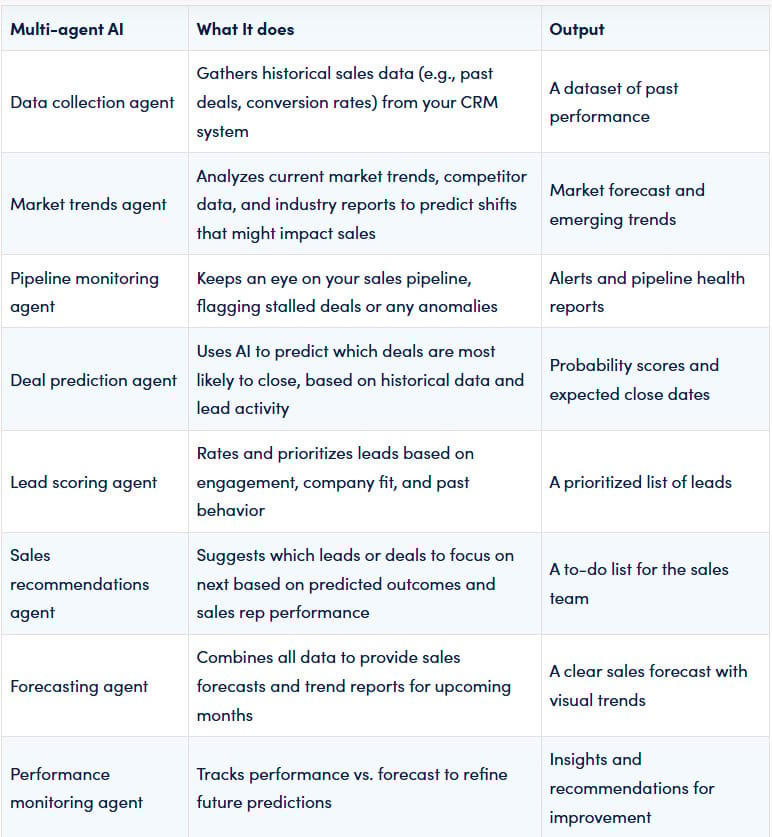
Apart from these, there is an Orchestrator Agent to ensure everything runs smoothly. Its job is to manage data flow between agents and handle any hiccups.
Best Multi-Agent AI tools?
After seeing what a focused AI like Jason can do on its own, I was curious to explore what happens when you bring in multiple agents. So, I tested some of the top platforms and shortlisted the best ones for you.
Whether you’re deep into dev workflows, part of an ops team looking for no-code solutions, or want more control over how your automations run, these platforms offer something for every kind of user.
1. Relevance AI
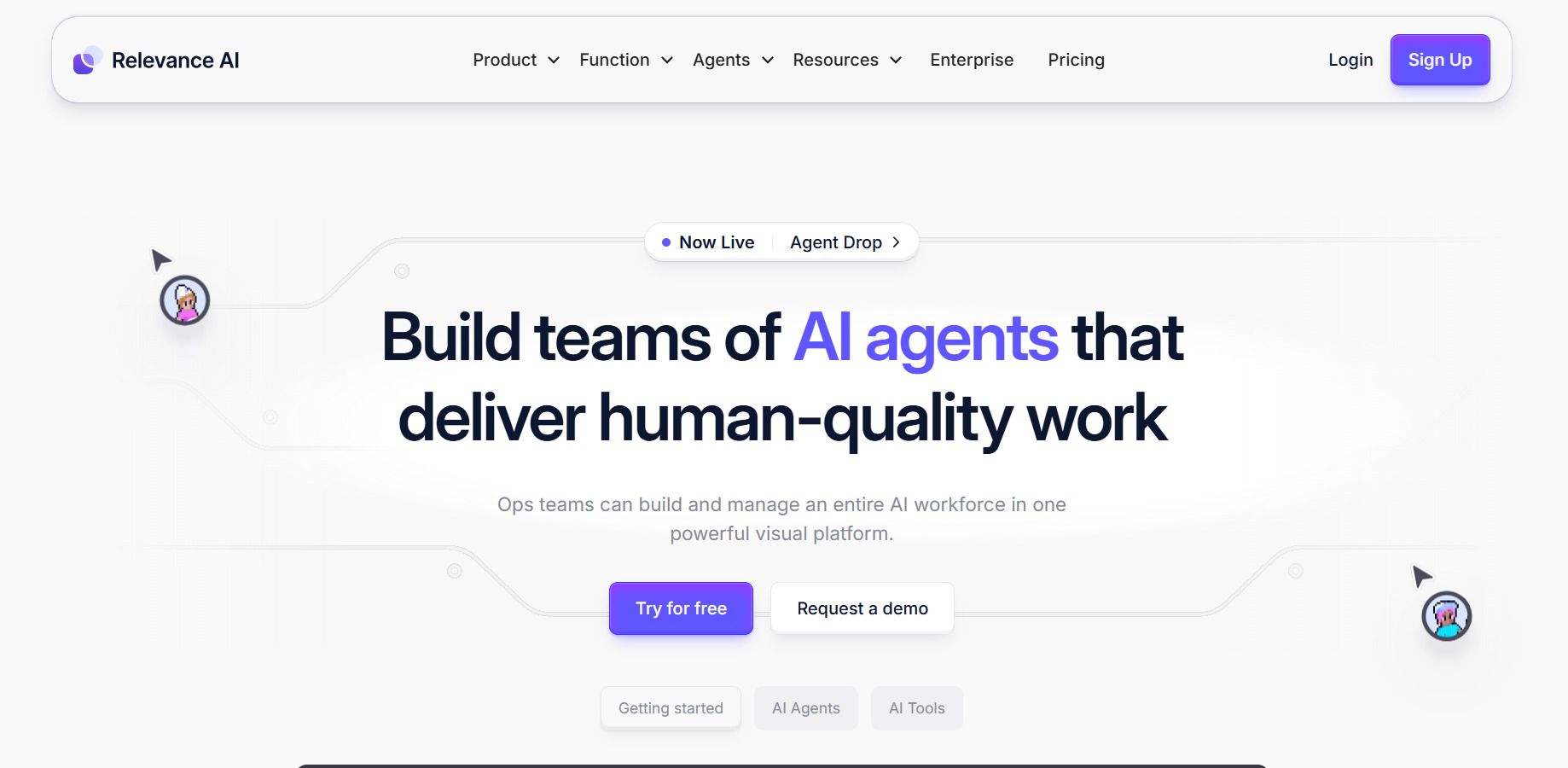
Relevance AI helps you build and customize AI agents without writing a single line of code.
You can easily train them to meet your business needs and integrate them directly into your team’s workflow. All thanks to the powerful suite of integrations with Zapier, Snowflake, HubSpot, Freshdesk, Webhooks, and many other tools in your tech stack.
Relevance AI pros:
Get started quickly with a library of ready-to-use tools and AI agent templates—designed to help you build, customize, and deploy in no time
Switch between top LLMs by OpenAI, Google, Meta, and Anthropic
Refine your AI agents using natural language, so they can adapt faster and continuously improve with every interaction
Relevance AI cons:
The UI could have been better
Relevance AI pricing:
Free
Pro: $19/month
Team: $199/month
Business: $599/month
Enterprise: Custom pricing
Who is Relevance AI best for?
Ops teams that want to build and manage an entire AI workforce.
2. n8n
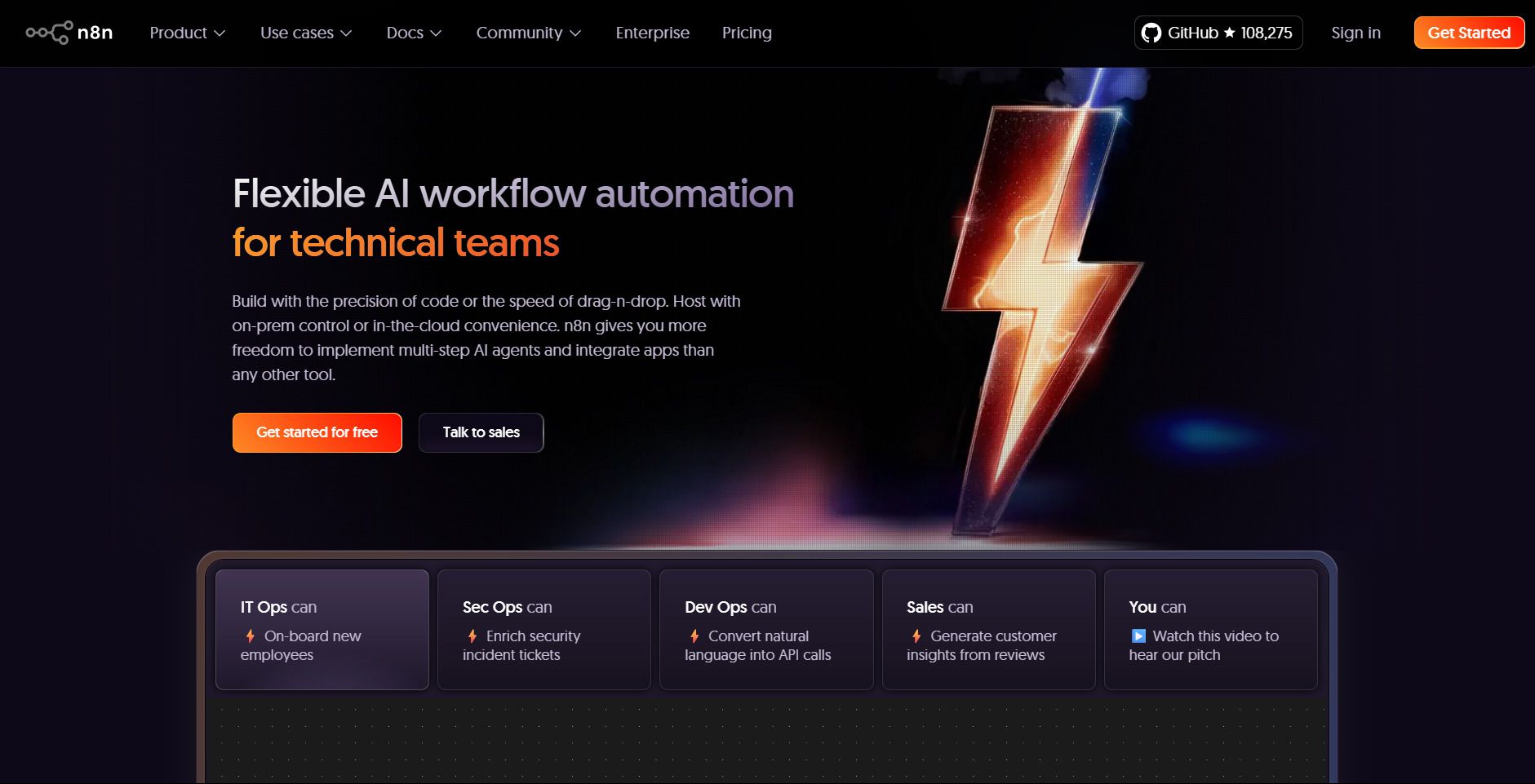
Unlike other tools that confine you to either visual builders or code, n8n offers the flexibility to seamlessly combine both approaches.
You can go back to Python or JavaScript whenever you need.
n8n pros:
Get instant answers from your data, create tasks directly from Slack, Teams, SMS, voice, or the platform’s built-in chat interface
Use 1700+ templates to get started with your project
Protect your data by deploying everything on-premise, even your AI models
n8n cons:
Difficult to set up and has a steep learning curve
n8n pricing:
Starter: €24/month per user
Pro: €60/month per user
Enterprise: Custom pricing
Who is n8n best for?
IT ops, dev ops, and sales teams are looking for flexible AI workflow automation.
3. Make com
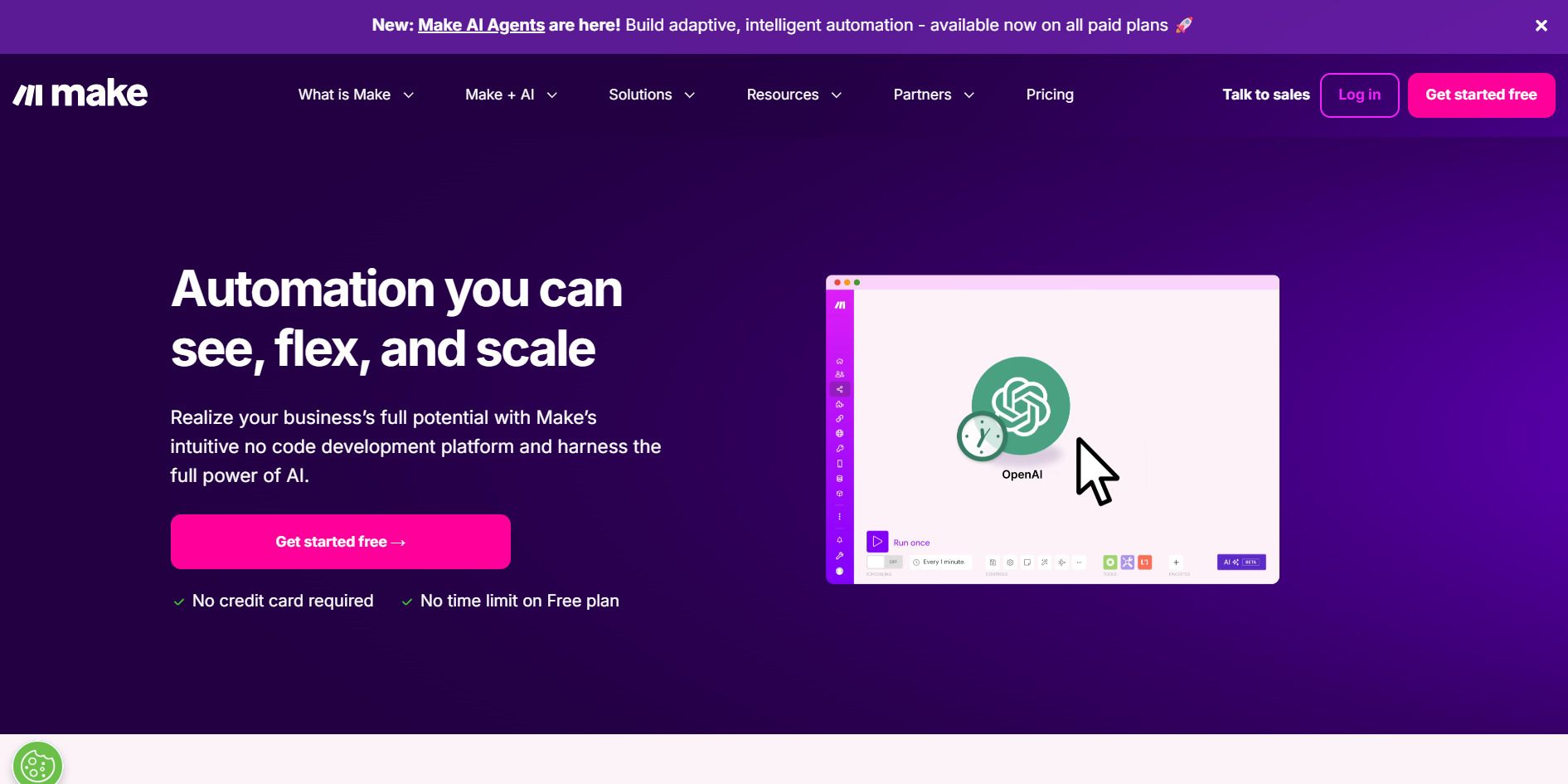
Make AI Agents interpret goals in natural language and adapt workflows seamlessly—they don’t rely on rigid rules.
Each agent uses a global system prompt to ensure consistency while still allowing for customization based on specific scenarios.
Make. com pros:
Collaborate as a team to design, refine, and share workflows—so you can deploy faster
Tap into 200+ pre-built integrations with popular AI apps
Keep your data secure with built-in GDPR and SOC 2 Type 1 compliance, encryption, and single sign-on (SSO)
Make. com cons:
Adding a custom app via API can be a complicated and time-consuming process
Make. com pricing:
Free
Core: $10.59/month
Pro: $18.82/month
Teams: $34.12/month
Enterprise: Custom pricing
Who is Make. com best for?
teams and individuals seeking to automate workflows, integrate AI tools, and streamline operations without extensive coding.
4. AutoGen
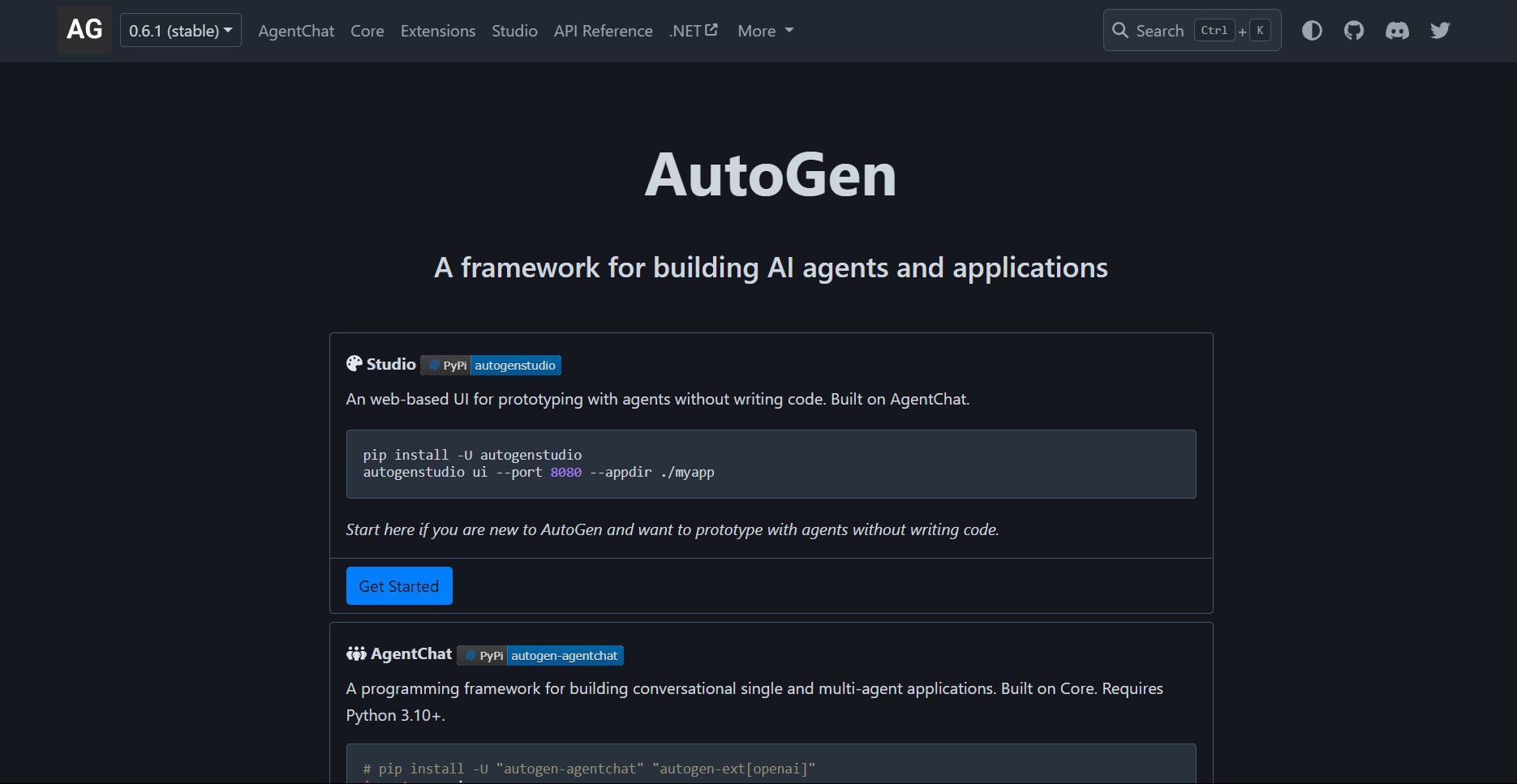
AutoGen is an open-source framework for building customizable AI multi-agents and multi-agent applications that collaborate through natural language to solve complex tasks.
Magentic-One CLI is a console-based assistant built on AutoGen’s AgentChat framework. It orchestrates multiple specialized agents (like web browsers, file navigators, and code executors) to handle web and file-based tasks efficiently.
AutoGen pros:
Prototype and manage agents without writing code using Studio
Integrate human feedback into AI workflows and get more accurate and context-aware outcomes
Being open-source, AutoGen encourages community contributions and transparency
AutoGen cons:
Lacks a visual builder or no-code editor, which makes it less accessible to non-technical users who prefer graphical interfaces
AutoGen pricing:
Pricing information isn’t available publicly.
Who is AutoGen best for?
Developers, researchers, and enterprises are seeking to build adaptable, multi-agent AI systems.
5. Flowise AI
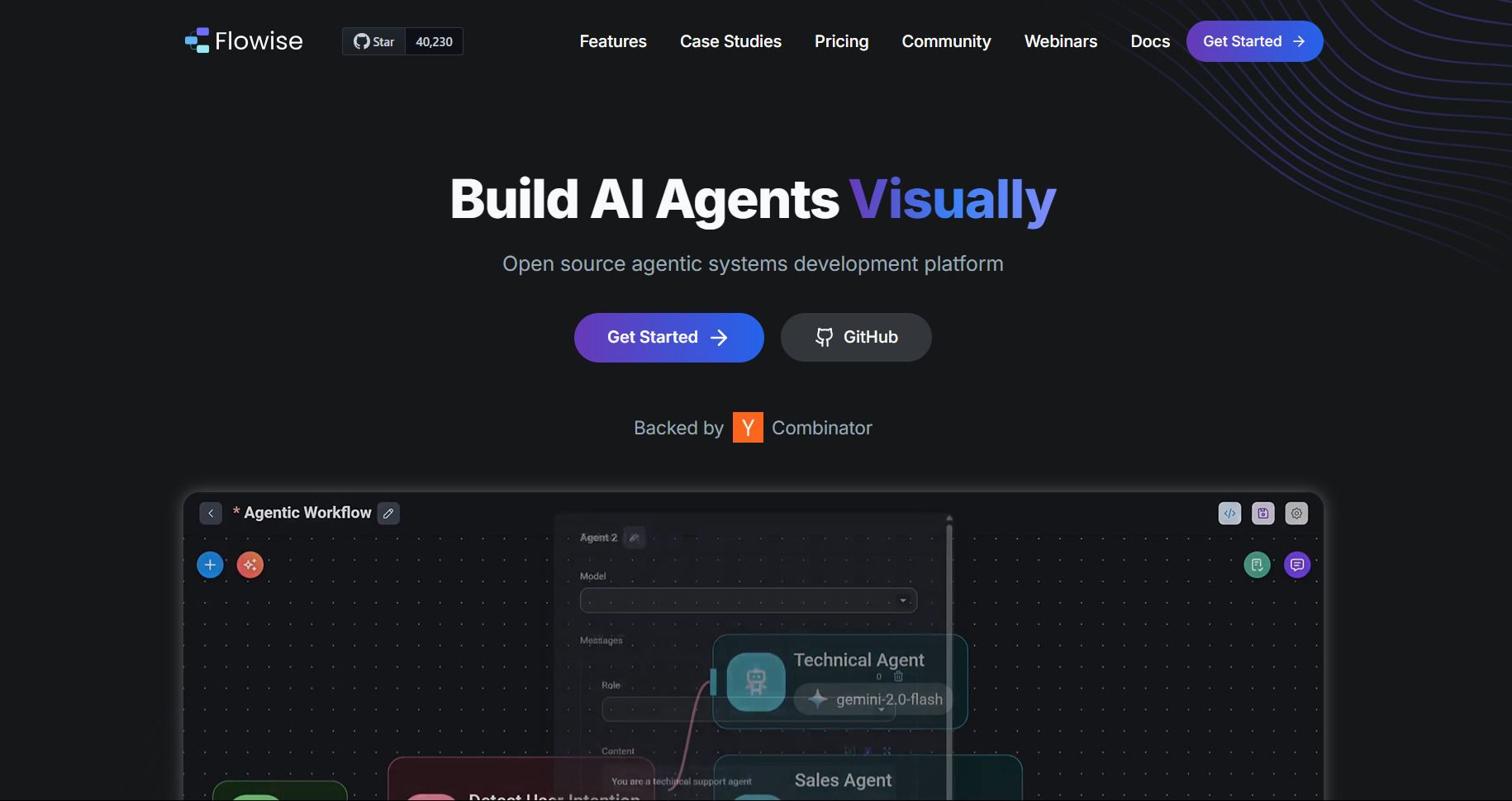
Flowise AI is an open-source low-code framework designed for developers building complex LLM workflows and AI agents.
Instead of writing endless lines of code, you design logic visually—it lets you refine prompts, route outputs, and layer tools as needed. It’s built for rapid iteration, so you can test, tweak, and deploy without breaking your flow.
Flowise AI pros:
Connect LLMs with features like memory, data loaders, caching, and moderation to build context-aware workflows
Embed into your app or product using APIs, SDKs, and chat interfaces for seamless integration
Create autonomous agents that can execute multi-step tasks, use custom tools, and tap into OpenAI Assistant
Flowise AI cons:
Lacks a comprehensive tracker or in-depth analytics for monitoring agent performance
Flowise AI pricing:
Free
Starter: $35/month
Pro: $65/month
Enterprise: Custom pricing
Who is Flowise AI best for?
Developers are creating LLM workflows and multi-AI agents.
How can companies get started with multi-agent AI?
Multi-agent AI sounds complex, but getting started doesn’t have to be. Here are practical steps you can take today to explore how multiple AI agents can work together to solve real business problems. Let’s break it down.
1. Identify a use case that involves multiple moving parts
Look for workflows that require coordination across roles or tools. For example:
Sales teams can automate lead scoring, email outreach, and meeting scheduling using a team of agents
Customer support can deploy agents for triaging tickets, summarizing customer history, and drafting replies
Marketing ops can use agents to analyze campaign data, monitor competitor activity, and generate reports
2. Choose a platform that fits your team’s skill level
You can go zero code, low-code, or a platform with pre-made templates and visual guidelines. Understand your team’s skill sets and pick a platform accordingly. For instance, a code-heavy platform would be useful if you have multiple developers in your team, but if it won’t work for non-tech teams.
3. Define roles for each agent
Treat your AI agents like teammates. Assign them clear responsibilities, such as:
Triage agent sorts incoming tickets by type and urgency
Knowledge agent finds relevant help articles or past solutions
Reply agent drafts accurate, human-sounding responses
Feedback agent tracks customer satisfaction and flags issues
For your pilot, start with just 2 to 3 agents working together. Track how they perform and how well they interact.
4. Expand from there
Once the pilot is running smoothly, scale up by adding more agents, more workflows, or integrating into tools in your tech stack (e.g. Salesforce, Slack, Google Workspace). Over time, you’ll build a network of AI agents that handle key parts of your operations, without adding headcount!
Wrapping up
The platforms above are a testament to what’s possible when AI agents work as a team and how they can help us work faster with smart delegation.
Multi-agent AI is no longer a thought of the distant future. It’s here, and it’s quietly changing how teams get things done.
And if you’re just getting started, Jason AI is the perfect starting point for sales teams—it handles outreach, replies, and scheduling like a seasoned SDR, and keeps your pipeline full.

